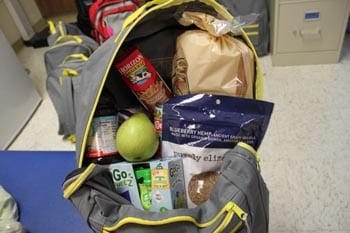I have done quite a bit of traveling this summer. It was a good reminder of how important it is to plan when traveling and eating on the run. With summer travel and school right around the corner, I saw it as a good opportunity to put guidelines out there for eating on the run. When reviewing the dietary analysis of athletes and clients, it is poor planning and preparation for snacks throughout the day that leads to poor choices and missed opportunities.
1. Fail to Prepare = Prepare to Fail
Planning will elevate performance, improve body comp, and save money. This summer, I stopped at a convenience store, grabbed a Core Power shake, boiled eggs, almonds, and fruit, and paid almost $20. If I’d prepped those snacks ahead at home or bought them in bulk at Costco? Half the cost, better nutrition, better results.
2. Snacking Between Meals: A Must for Recovery
Whether you are training, busy on campus, or a parent running their kids around, snacks aren’t indulgences; they’re strategic energy deliveries. Smart, portable calories—think peanut butter and crackers, boiled eggs, dried fruit, or protein bars—help bridge the gap between meals and keep your body fueled for recovery.
3. Smart Snack Options for the Road
Here are snack options that are easy to carry and effective for recovery:
Peanut butter & cracker or cheese & cracker packets
Almonds, mixed nuts, sunflower seeds (unsalted or low‑salt)
Apple or banana slices with peanut butter
Celery sticks, baby carrots
Low-fat string cheese, cottage cheese & fruit, yogurt parfaits
Bagels, English muffins, raisin bread with peanut butter or low-fat cream cheese
Fig bars, oatmeal‑raisin cookies, low-fat muffins
Trail mix, popcorn (without butter), pretzels, Terra chips, Raisins
Pre-packaged protein shake, protein bar
Beef sticks or low-fat beef jerky
Canned chicken (in water), tuna with low-fat mayo
Breakfast or granola bars, single-serve applesauce, low-fat milk
Fruit salad, fresh fruit, fruit & yogurt parfait
Microwavable oatmeal or soup, Uncrustables, sandwiches with lean meat or peanut butter & jelly
These snacks combine carbs, protein, and healthy fats—exactly what your muscles need for recovery and your brain needs to stay sharp.
4. Timing Is Everything
Don’t go for hours without eating, especially if you are training hard or travelling. Aim to eat every 2–3 hours: breakfast, lunch, dinner, and two to three snacks in between. It’s not grazing, it’s fueling. This pacing helps keep hunger in check and energy steady.
5. Think Cost-Efficient
Bulk-buying at stores like Costco or planning weekly snack prep saves money and ensures quality. Convenience-store snacks may cost more and offer less nutritional bang for your buck. A little prep goes a long way—both for your body and your wallet.
6. Skip Poor Options at the Pump
You don’t want to make a habit of fueling your body where you fuel your car. Convenience stores tend toward high‑sugar, high‑salt, processed snacks. By the time you check out, you’re tired and hungry—and likely to be overspending. Don’t let emergency hunger make the choices.
7. Plan for Summer Travel or Back-to-School Busy Days
Summer travel or returning to campus both test your nutrition game. But they also present an opportunity. Pack intelligently, prep in advance, and always carry reliable snacks. Even better: stash emergency snacks in different places, backpacks, the car, and the desk. When hunger strikes, you're ready.
8. Keep It Balanced
Include protein & healthy fats at every snack to stabilize energy. Favor whole, minimally processed foods over chips and candy. Hydrate—water first, but unsweetened teas or low-sugar drinks work too.
The Bottom Line
Plan before you go—prep snacks and meals in advance.
Snack smart, snack often—not mindless grazing but targeted fueling.
Invest in real food, not just convenience, you’ll save money and perform better.
Stay hydrated, eat balanced snacks, and refuel post-training.
Be intentional with every snack and meal, especially on the run. Your recovery, your performance, and your budget all win when you take control of your fuel.



